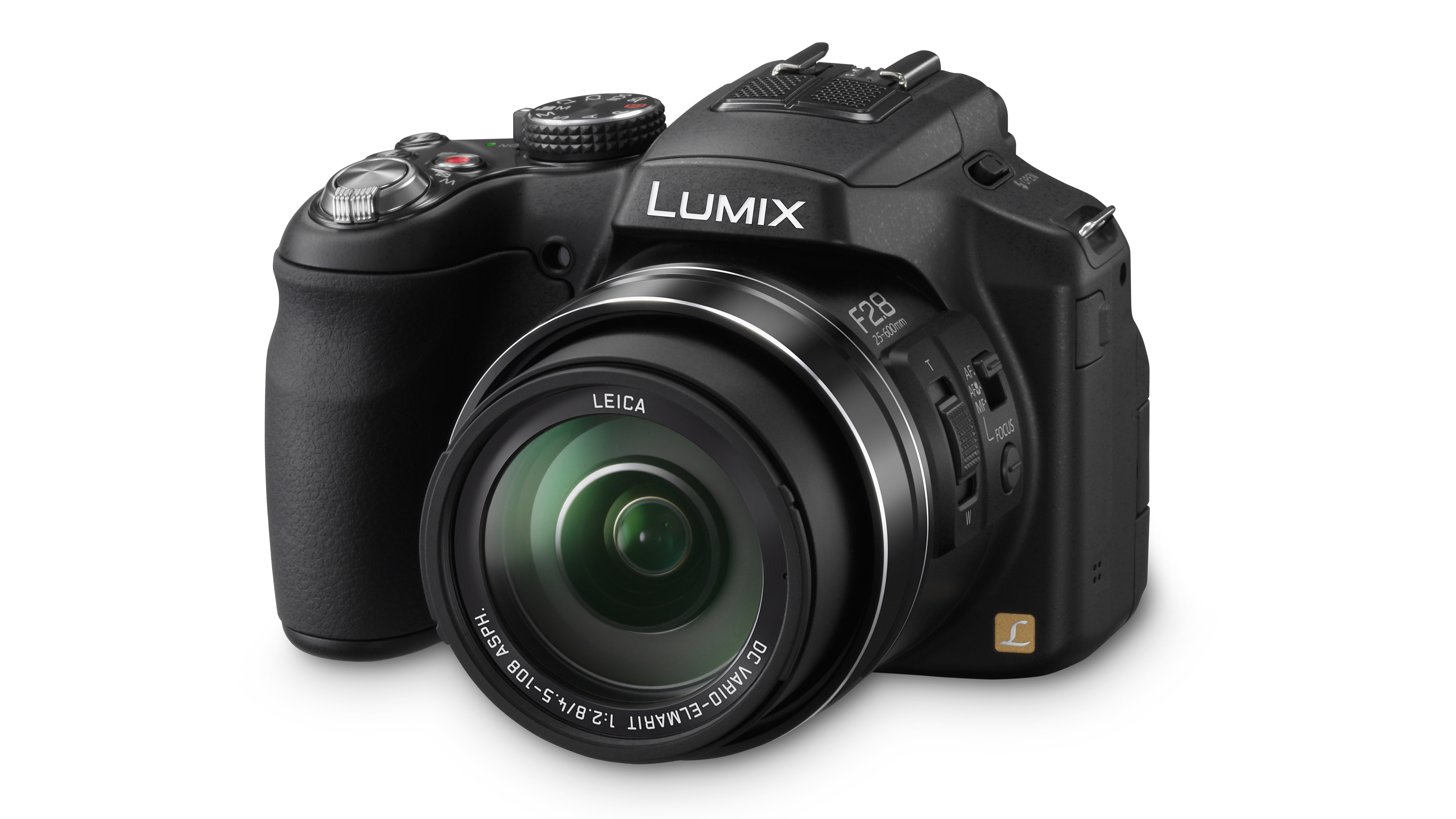Why you can trust TechRadar
We shoot a specially designed chart in carefully controlled conditions and the resulting images are analysed using DXO Analyzer software to generate the data to produce the graphs below.
A high signal to noise ratio (SNR) indicates a cleaner and better quality image.
For more more details on how to interpret our test data, check out our full explanation of our noise and dynamic range tests.
Here we compare the Panasonic FZ200 with the Panasonic FZ150, Canon G12 and Nikon D3100. Follow this link to see how it compares with the Canon SX50 HS.
JPEG signal to noise ratio
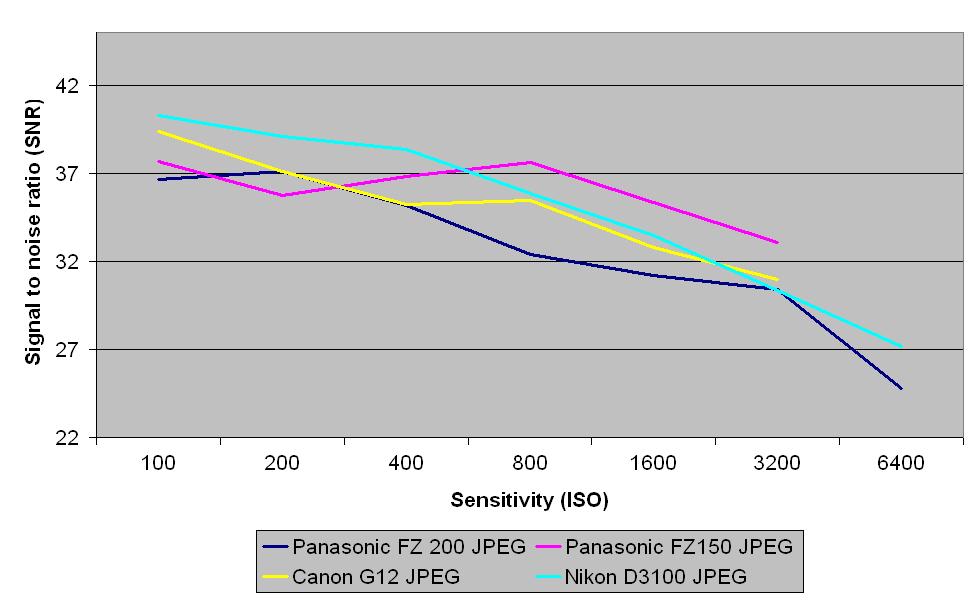
These results show that the Panasonic FZ200's JPEG files have a similar signal to noise ratio to those from the Panasonic FZ150, Canon G12 and Nikon D3100 at lower sensitivities, but it tails off at mid to high ISO settings.
Raw signal to noise ratio
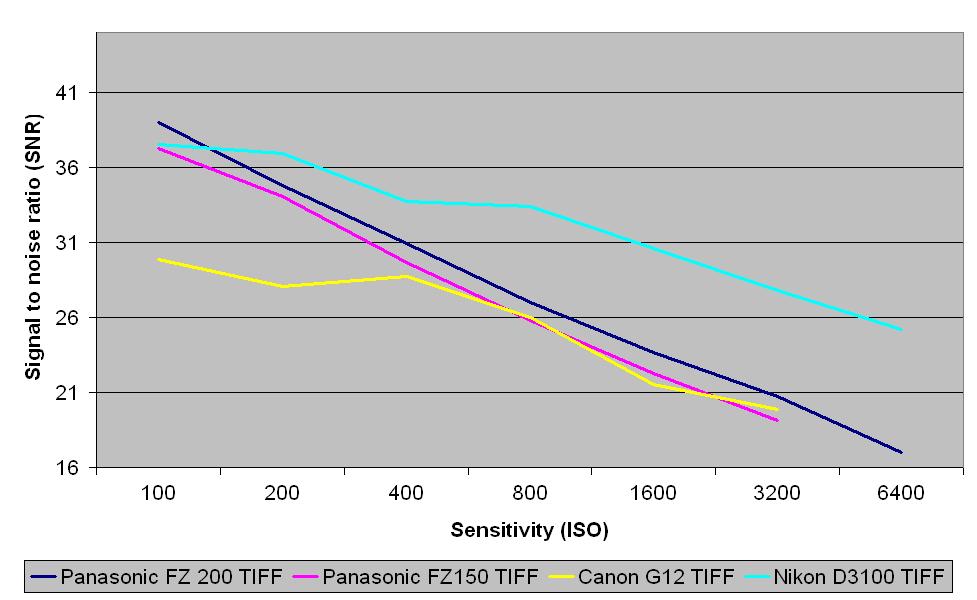
The signal to noise ratios of the TIFF images (after conversion from raw) from the Panasonic FZ200 are higher than those from the Panasonic FZ150 and Canon G12 but lower than those in the Nikon D3100's images.
JPEG dynamic range
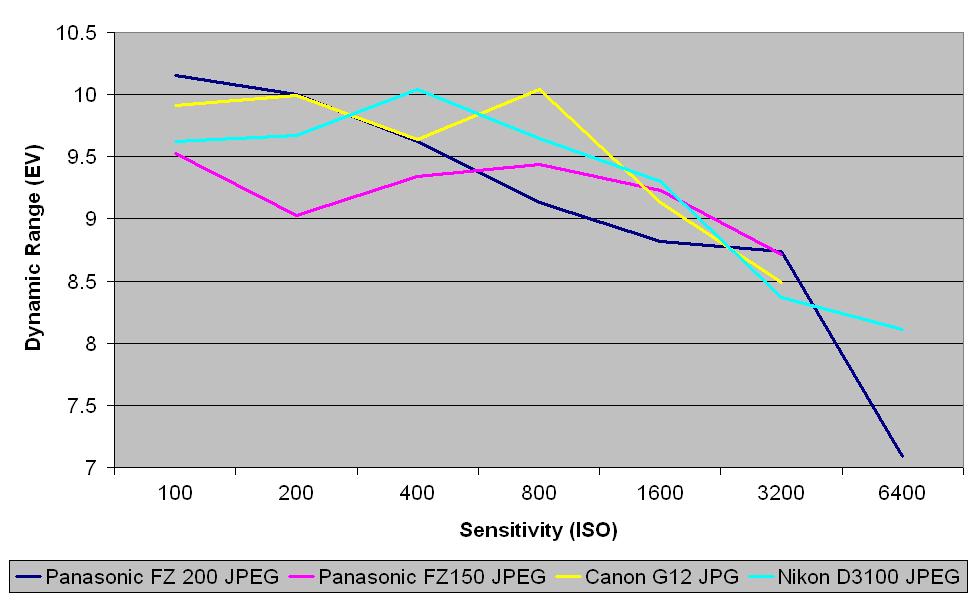
JPEG results for dynamic range are more spread out than those for signal to noise ratio, with the Panasonic FZ200 producing results similar to the Canon G12, better than the Panasonic FZ150 and worse than the Nikon D3100 at low to mid sensitivities. There's a sharp drop-off at the top ISO setting, falling well below all the other cameras.
Raw dynamic range
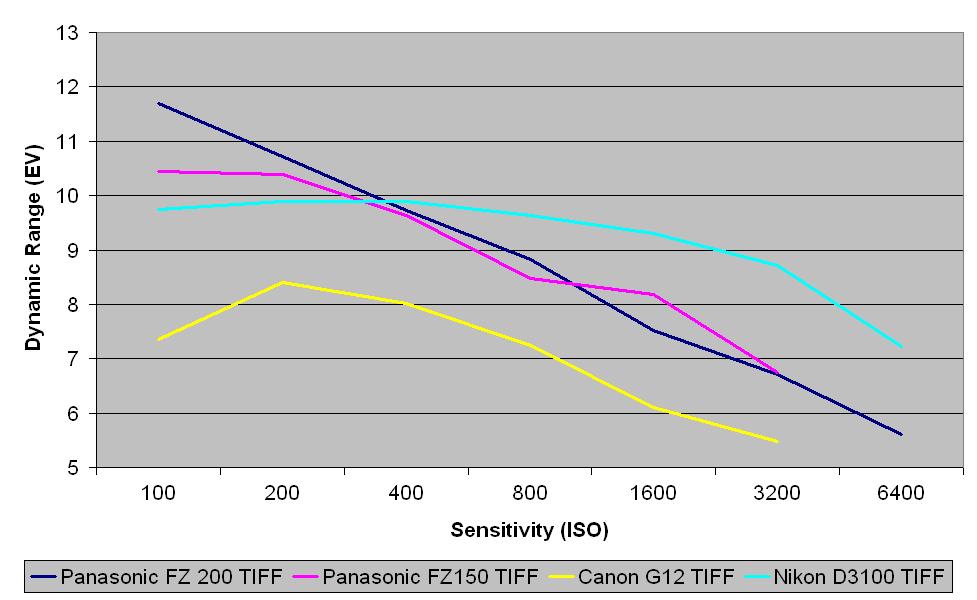
This chart indicates that TIFF images (after conversion from raw) from the Panasonic FZ200 start off the best at low ISOs, and are similar to the Panasonic FZ150 from ISO 200-3200. It scores the same as the Nikon D3100 at ISO 400, before falling below it. Its images consistently have a greater dynamic range than those from the Canon G12.
Current page: Noise and dynamic range
Prev Page Image quality and resolution Next Page Sample images